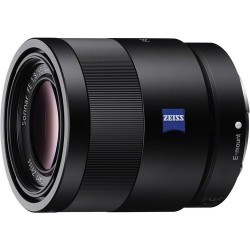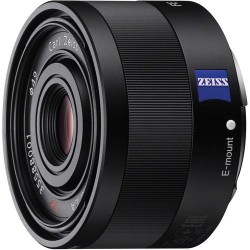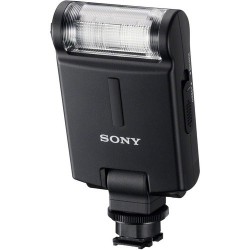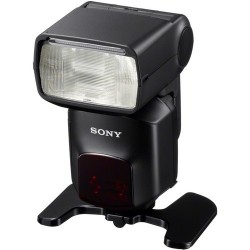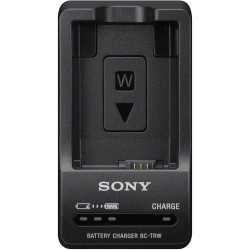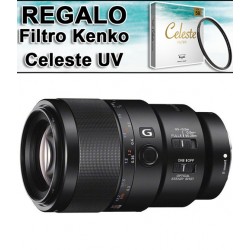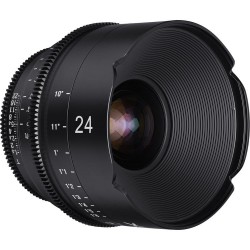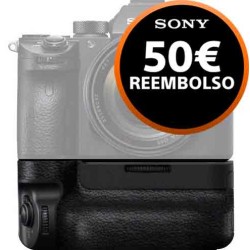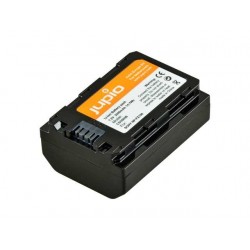- On sale!
- -20%
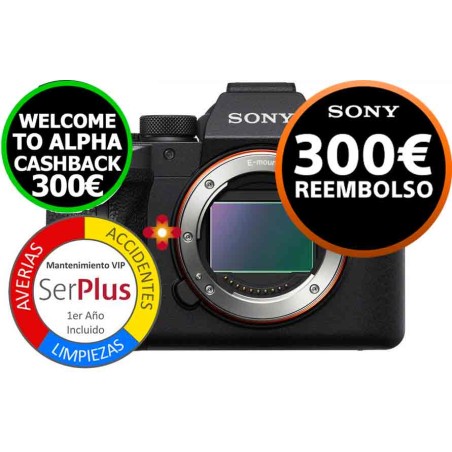











The Japanese company has listened to its users and has released the SONY A9 II camera, with great improvements in ergonomics and connectivity. There were already many sports photographers who have discovered the incredible speed of these cameras. The Price SONY A9 II allows you to get a mirrorless with a 24.2MP Exmor RS BSI full-frame CMOS sensor and the updated processor achieves results at a level of speed never seen before.
This purchase includes:
Thanks to Welcome to Alpha, SONY will refund you €300 on your next purchases
More info at:
![]()
![]()
Discover all its secrets in SONY A9 II
The second generation of speed, the SONY Alpha a9 II takes the impressive feature set of its predecessor and adds improved connectivity, a refined body design, and even faster performance. Using the proven 24.2MP full-frame Exmor RS BSI stacked CMOS sensor and an updated BIONZ X processor, the a9 II has especially fast and responsive capabilities. It's possible to shoot up to 20fps with a silent electronic shutter or up to 10fps with a mechanical shutter, along with a wide sensitivity range that reaches up to an extended ISO 204800. The sensor design also incorporates a 693-point phase. Detection autofocus system, which offers intelligent subject tracking and real-time eye AF to ensure critical focus on moving subjects. The BIONZ X also performs up to 60 AF/AE functions per second to accompany shooting at 20fps for reliable results in rapidly changing situations. In addition to still images, UHD 4K video recording is supported at up to 30fps and fast and slow motion recording is also available. In addition, the shift image stabilization of the 5-axis SteadyShot INSIDE sensor is also available, which minimizes the appearance of camera shake by up to 5.5 stops.
Benefiting the imaging capabilities, the a9 II receives a dramatic update to its physical design, featuring a more ergonomic body shape, refined climate sealing, and improved connectivity. A 3.69m-dot OLED EVF provides a bright and clear viewing medium at eye level and enables unobscured viewing to support continuous high-speed photography. The 3.0" 1.44m dot rear tilting LCD screen also has a touchscreen design for intuitive control over shooting settings and playback. Dual UHS-II SD memory card slots allow for flexible file storage and the a9 II has been equipped with an enhanced 1000BASE Ethernet T port for faster wired LAN sharing and remote camera operation. The 5.0GHz wireless connection and Bluetooth are integrated, too, for wireless sharing and remote control of the camera. In addition, voice memos allow you to record sound clips of up to 60 seconds with each photo, which can then be automatically converted to text, using the Transfer & Tag app plugin, and then embedded in the metadata of the files
Designed for speed, the a9 II uses a 24.2MP Exmor RS BSI stacked CMOS sensor, along with an updated BIONZ X image processor, which delivers impressively fast and responsive performance. Continuous shooting of up to 20 fps is possible with an electronic shutter or 10 fps shooting with a mechanical shutter is supported. The sensor's back-illuminated design also offers high sensitivity at an extended ISO 204800 with reduced noise for clean image quality in a variety of lighting conditions. In addition, raw, uncompressed files can be recorded in 14-bit for greater color fidelity and post-production flexibility.
The BIONZ X processor also works in tandem with a front-facing high-speed LSI for faster processing times along with a wide dynamic range with smooth tonal representation. Benefiting from fast recording capabilities is an equally fast AF/AE metering system that operates at 60 times per second to continuously assess the scene to lock on and track moving subjects. Auto anti-flicker shooting also recognizes and synchronizes the shutter action to minimize the flickering effect for more consistent results in still images. In addition, due to the use of an electronic shutter, completely blackout-free monitoring is possible with the electronic viewfinder for more accurate compositions of moving subjects.
Covering 93% of the image area, a fast hybrid AF system incorporates 693 phase-detection points along with 425 contrast-detection areas for fast and accurate focusing in a variety of lighting conditions with sensitivity down to -3 EV. The density of the focus points of this hybrid AF system also enables high-density AF tracking technology, which is adept at tracking moving subjects in a variety of lighting conditions. Updated AF algorithms also benefit from maintaining critical focus on erratic or unpredictable moving subjects. In addition, the use of phase-detection points allows the use of A-mount lenses via the optional LA-EA3 or LA-EA1 mount adapters with continuous AF/AE tracking compatibility.
The apt focus system also lends itself to a variety of focusing functions for refined precision, including lock-on autofocus, which maintains focus on moving subjects by using a configurable frame that is set on the desired moving subject, and Expand Flexible Point, which employs neighboring focus points to maintain focus on moving subjects, even if the originally selected point loses focus. The color of the focus frame is selectable, between white and red, and AF tracking is possible with apertures narrower than f/16 with selected lenses when working in Focus Priority mode. In addition, Eye AF can be used to focus on the eyes of recognized human subjects for portraits and is available in AF-S and AF-C modes, for both still images and video. Eye AF can also be used when photographing animal subjects, with any focus mode when taking pictures. Autofocus can also be used in conjunction with the Focus Magnifier function for critical focus when focusing on minute details of the subject. The rear touchscreen can also be used for Touch Focus control, and the Touchpad Focus Control mode allows you to use the rear display intuitively while keeping your eyes on the viewfinder. In addition, when working in AF-C mode, the focus point can be moved while the shutter button is pressed halfway, making it easy to quickly change focus without losing sight of the action.
Internal recording of UHD 4K movies is possible at multiple frame rates of up to 30fps and, depending on the Super35mm recording area and effective 6K resolution, oversampling offers greater detail and full pixel readout, which lacks pixel binning, is possible for higher quality images with reduced moiré and aliasing. Full-frame 4K recording has also been dramatically improved to improve quality when working at medium to high sensitivities to allow full use of the full width of the sensor. Full HD 1080p recording also supports frame rates up to 120fps, and both resolutions use the 100Mbps XAVC S format contained in an MP4 container with 4:2:0 sampling. High-speed recording at 120fps also allows for 4x and 5x slow-motion movie recording with the frame rate set to 30p or 24p. In addition to internal high-resolution recording, the uncompressed HDMI output also allows the use of an optional external recorder for clean 4K recording with 4:2:2 sampling.
4K video recording also takes advantage of the ability to produce 8MP stills during playback by taking a frame capture of a movie and storing it as a separate file.
SteadyShot INSIDE 5-axis image stabilization
The a9 II features an enhanced 5-axis, 5.5-stop SteadyShot INSIDE image stabilization system, which compensates for the five different types of camera shake encountered during manual still and video capture. This allows users to confidently use any lens, even adapted lenses, to obtain critical images without encountering blurriness from camera shake.
For long focal lengths, the system will correct the tilt and yaw settings. Macro and high-magnification images, on the other hand, will benefit from the inclusion of horizontal and vertical scroll compensation. All shooting styles will get the use of roll compensation. The 5-axis stabilization will work at all times, even when used with third-party lenses and adapters or lenses with built-in optical stabilization.
It is possible to save/load camera settings to the camera as well as to an SD card to work with the same shooting setup with multiple camera bodies.
The customizable Fn button can be configured to handle separate tasks depending on whether working in fixed or video modes.
A ratings feature allows you to assign star values, from 1 to 5, to images in-camera for faster editing and sorting at home during post-production.
An advanced 1200-zone evaluative exposure metering sensor delivers consistent and accurate results using multi-segment, center-weighted, or spot metering modes.
The Highlight and Average metering modes help prevent muffled reflections and provide stable auto exposure, respectively.
You might also like

The Japanese company has listened to its users and has released the SONY A9 II camera, with great improvements in ergonomics and connectivity. There were already many sports photographers who have discovered the incredible speed of these cameras. The Price SONY A9 II allows you to get a mirrorless with a 24.2MP Exmor RS BSI full-frame CMOS sensor and the updated processor achieves results at a level of speed never seen before.
This purchase includes:
Thanks to Welcome to Alpha, SONY will refund you €300 on your next purchases
More info at:




